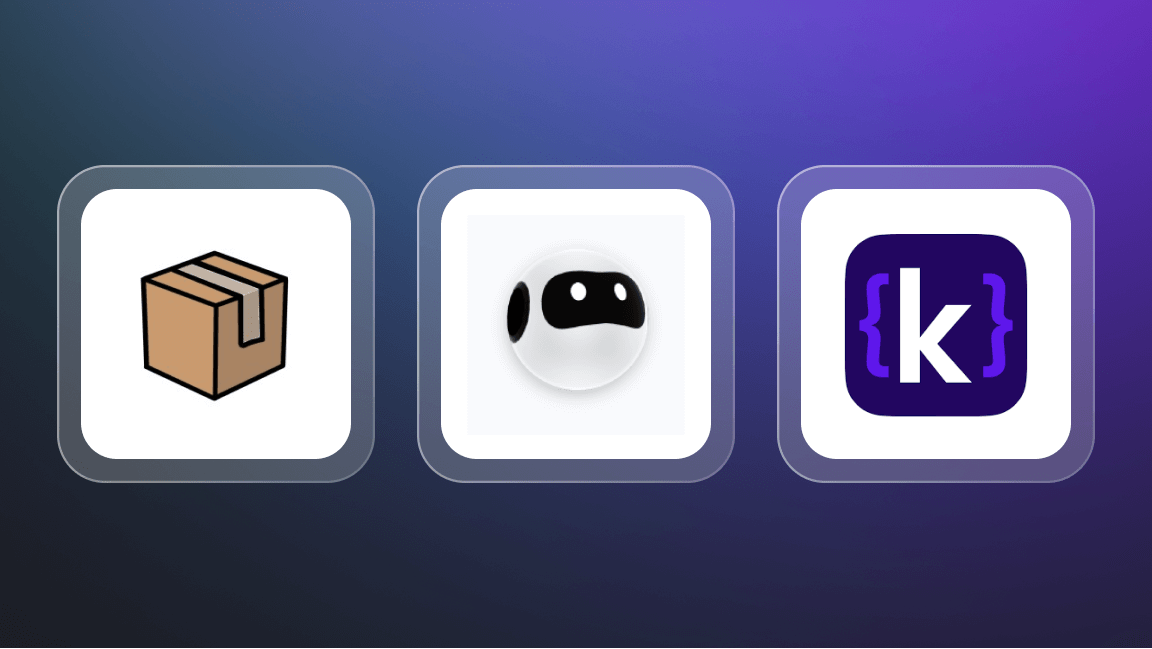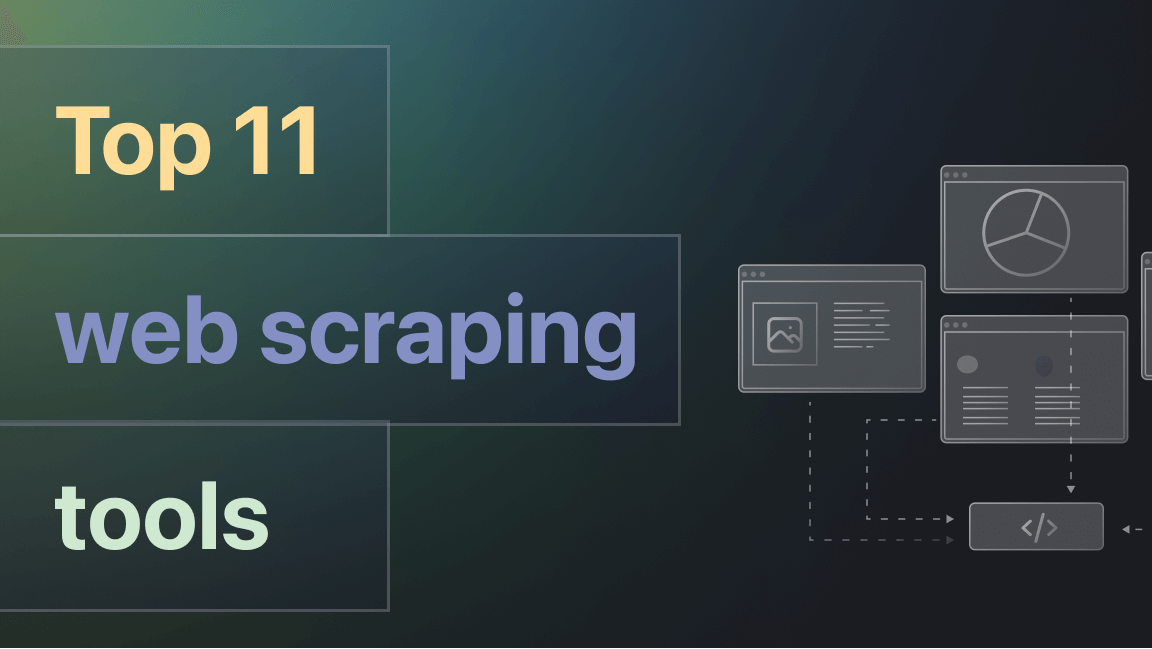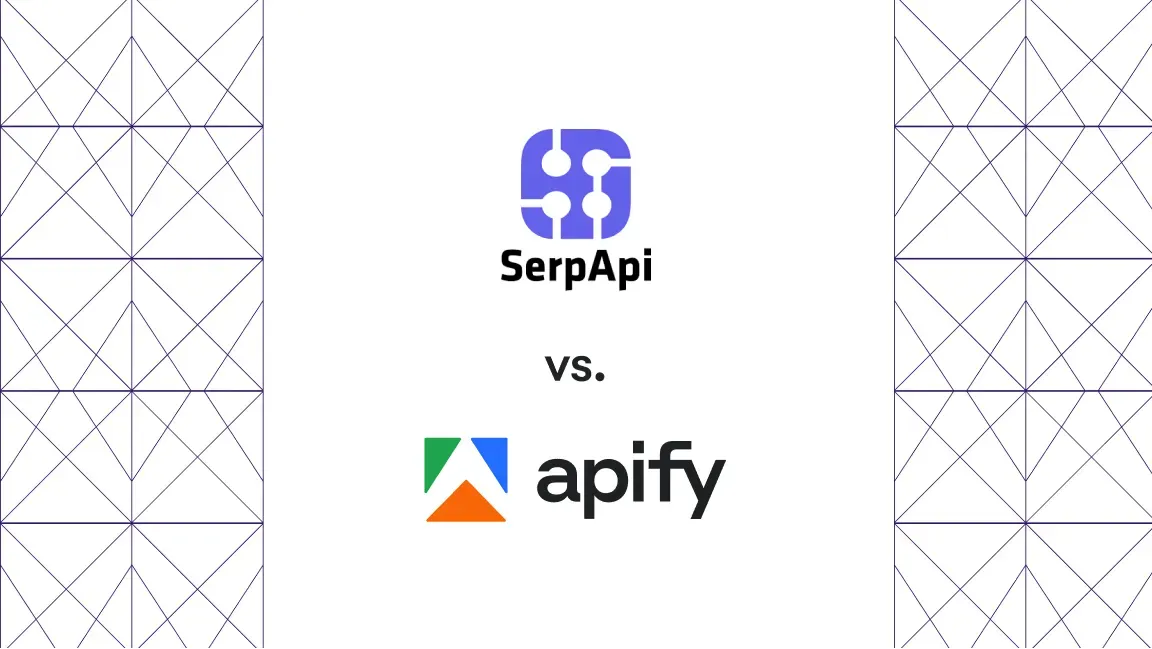The world of web scraping has been transformed by the recent AI wave. These emerging trends have given rise to two contrasting philosophies: AI-driven data extraction vs. manual data parsing. Let’s compare two of the most popular representatives of each approach:
- Firecrawl: An API-first platform that converts any URL into LLM-ready Markdown or JSON.
- BeautifulSoup: An open-source Python library that provides a rich API for pulling data out of HTML and XML documents.
In this blog post, we’ll look at how these two technologies stack up across challenges, architecture, developer experience, scalability, extraction intelligence, ecosystem, and pricing. Finally, we’ll explain why Apify is a strong alternative to both.
Firecrawl vs. BeautifulSoup at a glance
| Aspect | BeautifulSoup | Firecrawl |
|---|---|---|
| Type | HTML and XML parsing library | Web crawling, scraping, and search API platform with an open-source core |
| Developed in | Python | TypeScript (with official SDKs available in multiple languages) |
| Data extraction style | Selector-based + custom navigation/exploration methods | Zero-selector natural-language prompts |
| Dynamic-content handling | Not supported (requires external tools like Selenium/Playwright) | Supported via pre-warmed headless Chromium instances; service decides HTTP requests vs. browser rendering on the fly |
| Built-in intelligence | Handled by the developer | AI-powered, with automatic JS detection, customization options, and dedicated Stealth Mode |
| Scaling model | User-managed | Cloud fleet with per-plan concurrency and request caps |
| Integrations | Commonly paired with HTTP clients like Requests, HTTPX, AIOHTTP | Native integrations with LangChain, LlamaIndex, Dify, Flowise, CrewAI, and others; MCP support |
| Pricing headline | Free | Credit-based (1 page = at least 1 credit); plans start at $16+/mo |
| Licence | MIT | Commercial (Cloud version); AGPL-3.0 (Open Source version) |
| Latest release | v4.13.4 (15 Apr 2025) | v3.1.0 (21 Aug 2025) |
Pricing
BeautifulSoup is an open-source library, which is and always will be permanently free. On the other hand, Firecrawl is available both as an open-source solution and as a premium cloud API with extended capabilities. Thus, it makes sense to compare the two libraries in these three scenarios:
- BeautifulSoup
- Firecrawl Open Source
- Firecrawl Cloud
Both BeautifulSoup and Firecrawl Open Source are free to use forever. You can even fork their repositories, modify the code, and experiment in accordance with their licenses. By contrast, Firecrawl Cloud provides a hosted service with extra features and, as of now, offers the following plans:
| Plan | Credits | Price (Annual) | Price (Monthly) | Features |
|---|---|---|---|---|
| Free | 500 (one-time) | $0 | $0 | Scrape up to 500 pages, 2 concurrent requests, low rate limits |
| Hobby | 3,000/mo | $16/mo | $19/mo | Scrape up to 3,000 pages, 5 concurrent requests |
| Standard | 100,000/mo | $83/mo | $99/mo | Scrape up to 100,000 pages, 50 concurrent requests, standard support |
| Growth | 500,000/mo | $333/mo | $399/mo | Scrape up to 500,000 pages, 100 concurrent requests, priority support |
In other words, Firecrawl Cloud is free for the first 500 credits. After that, you need to upgrade to the Hobby, Standard, or Growth plans for more credits and higher rate limits.
Keep in mind that each API request in Firecrawl Cloud consumes credits, with all requests starting at 1 credit. So, in the simplest setup, one credit corresponds to one scraped page. Then, certain features require additional credits:
- PDF parsing: +1 credit per PDF page
- JSON output: +5 credits per page
- Stealth Mode: +4 credits per page
- and more depending on the specific activated feature…
In summary, you can compare Firecrawl vs. BeautifulSoup pricing with this table:
| Tool | Version | Price |
|---|---|---|
| BeautifulSoup | Open source | Free forever |
| Firecrawl | Open Source | Free forever |
| Firecrawl | Cloud (premium features) | Free for 500 credits, then $16+/mo |
Challenges and limitations
As highlighted on Reddit, GitHub issues, and community discussions, key drawbacks of Firecrawl include:
- The open-source version is currently not fully ready for self-hosting, as it's even stressed on the official GitHub page.
- Firecrawl is still under active development (for example, API endpoints have changed between v1 and v2 within less than two years).
- Certain self-hosted endpoints behave differently from the Cloud version, sometimes nudging users toward paid plans.
- Actions like scrolling, clicking, or interacting with dynamic pages are not always reliable, which can lead to missing data.
- Prompt-based scraping requires careful prompt design and management, which means it may not be that easy to get started with.
- Some users complain that it costs too much for the level of service and reliability offered.
As highlighted on Stack Overflow and several blog posts, the main limitations of BeautifulSoup include:
- It doesn’t handle JavaScript execution or rendering, which also means it can’t automate user actions such as clicking, scrolling, or form submission.
- BeautifulSoup is a parser, not a complete scraping framework, so you must integrate it with at least an HTTP client (e.g., Requests or HTTPX) and understand HTTP fundamentals, including TLS, headers, cookies, etc.
- It requires deep knowledge of the DOM of the target pages.
- It can’t directly access or parse content within the shadow DOM.
- Parsing logic breaks if the target site changes its structure, class names, or HTML hierarchy.
Philosophy and architecture
Let’s continue this Firecrawl vs. BeautifulSoup comparison by exploring the technical architecture of these two libraries and their approach to web data parsing and retrieval.
Firecrawl
Firecrawl is a web scraping API, meaning it acts as a web server that exposes endpoints for tasks like data extraction, web search, crawling, and similar goals.
Currently, the available Firecrawl endpoints include:
/scrape: Extract content from any webpage in multiple formats (HTML, Markdown, screenshots, JSON)./crawl: Crawl entire websites and extract content from all discovered URLs./map: Retrieve a complete list of URLs from the input website./search: Search the web and get full-page content in multiple formats./extract: Extract structured data from webpages with natural language prompts via AI.
Whether you launch Firecrawl locally via the Open Source version (or self-host it on your own server when supported) or rely on Firecrawl Cloud, those are the endpoints you will have access to. You can call them directly with your HTTP client or through the official Firecrawl SDKs, available for Python and Node.js (with Rust and Go SDKs for Firecrawl v1).
In its Open Source version, Firecrawl handles the orchestration of scraping tasks but doesn’t include a custom engine for the scraping itself. Instead, it relies on third-party tools like the Fetch API for basic HTTP requests and Playwright for handling complex, dynamic websites. Structured data parsing is then demanded by AI via LLM Extract.
On the contrary, the Cloud version includes Fire Engine, a proprietary scraping primitive that provides advanced functionality for handling IP blocks, bypassing bot detection, and overcoming the limitations of Fetch API and Playwright. This promises stronger performance and reliability.
In summary, the main Firecrawl features are:
- LLM-ready output formats: Markdown, structured data, screenshots, HTML, links, and metadata.
- Advanced scraping capabilities: Built-in proxy handling, anti-bot bypass, support for dynamic JavaScript-rendered content, plus actions like click, scroll, input, and wait before extraction.
- Customizability options: Exclude specific tags, set custom headers, and control maximum crawl depth.
- Rich media parsing: Extract content from PDFs, DOCX files, and images
- Batch scraping: Scrape thousands of URLs simultaneously through a single endpoint.
BeautifulSoup
BeautifulSoup is a Python library for extracting data from HTML and XML files. It acts as a high-level HTML/XML parser, providing an intuitive API for navigating, searching, and manipulating the DOM.
Note that BeautifulSoup doesn’t include rendering capabilities and can’t fetch the HTML document from a URL. You provide the HTML/XML content as a string, a file, or a file-like object, and BeautifulSoup parses it through a chosen low-level parser engine. That’s it!
The most widely used supported parser engines are:
html.parser: Python’s built-in HTML parser.lxml: Very fast C-based parser that supports both HTML and XML.html5lib: Pure-Python library that produces a standards-compliant parse tree.
Each low-level parser has its own features and characteristics, such as XPath support and performance differences. So the choice you make directly impacts speed and functionality.
Since BeautifulSoup is only an HTML parser, the HTML content typically comes from an HTTP client. That’s why tech stacks like Requests + BeautifulSoup are so popular, at least for scraping static sites (it can’t execute JavaScript, so it’s not suitable for dynamic pages).
In short, the main BeautifulSoup features include:
- Complete DOM support: Provides a rich API with dozens of methods for parse tree navigation, searching, and modification.
- Automatic encoding conversion: Converts incoming documents to Unicode and outgoing documents to UTF-8, avoiding character encoding issues.
- Integration with multiple parsers: Works with many low-level parser engines, letting you integrate the one you prefer.
- Robust parsing of malformed markup: Can gracefully handle poorly formatted or “tag soup” HTML, creating a navigable parse tree from imperfect documents.
- Native CSS selector support: Allows writing CSS selectors for precise element selection in addition to its own methods.
Developer experience and customization
BeautifulSoup is a Python-first library that provides a clean, synchronous API for parsing HTML and XML. It’s typically combined with Python HTTP clients like Requests or HTTPX to retrieve HTML content. These solutions give you full control over authentication, session cookies, headers, and custom retry/backoff logic.
Once the HTML content is retrieved, BeautifulSoup lets you navigate the DOM and extract data via CSS selectors, regex, or custom logic. Because it’s purely a parser, you are fully responsible for writing the data parsing logic.
import requests
from bs4 import BeautifulSoup
response = requests.get("https://example-ecommerce.com/products/bookcase-fgh46fg")
soup = BeautifulSoup(response.text, "html.parser")
title = soup.find("h1").text
price = soup.select_one(".price").get("value")
# ...
In addition, you can choose the underlying low-level HTML parsing library. Keep in mind that parsers like lxml also provide XPath support when used with BeautifulSoup.
By contrast, Firecrawl is language-agnostic and accessible via a REST API with any HTTP client, including visual ones like Postman and Insomnia. Still, calling the APIs via the official SDKs is recommended. For beginners, the playground interface helps you rapidly learn how the endpoints work.
Its /scrape endpoint can return the raw HTML, the rendered HTML, or a Markdown version of the page. For structured data extraction, you need to provide a natural-language prompt describing the data you want. If you also specify a schema, Firecrawl will return the data as structured JSON in the expected format. Compared to BeautifulSoup, this means you don’t manually control the parsing process, as the AI handles it for you.
from firecrawl import Firecrawl
firecrawl = Firecrawl(api_key="fc-YOUR-API-KEY")
schema = {
"type": "object",
"properties": {
"title": {"type": "string"},
"price": {"type": "string"}
},
"required": ["title", "price"],
}
res = firecrawl.extract(
urls=["https://example-ecommerce.com/products/library-shelf"],
prompt="Extract the product title and price from this page",
schema=schema,
)
Customization options include the ability to include or exclude specific tags, wait for certain elements to appear, and perform interactive actions on the page, such as clicking buttons, typing, or scrolling.
Infrastructure and autoscaling
Firecrawl supports two deployment modes:
- Self-hosting: You can host the open-source library yourself. As mentioned earlier, this option is not fully supported or recommended yet. In this case, you would need a Node.js server to run the Firecrawl services locally.
- Fully managed: With the Cloud version, you have access to a SaaS API. That means you call its endpoints using your API token and receive the results directly. Scalability, browser sessions, and updates are handled by the company for you, with concurrency options and rate limits changing depending on your plan.
BeautifulSoup is just one component of a Python web scraping script, so the overall scalability of your project doesn’t depend solely on it. Still, thanks to its lightweight approach to HTML parsing and support for performance-optimized low-level parsers like lxml, you can scrape hundreds or even thousands of pages per minute using the same script. For deployment, you need a server with Python 3.7+ support.
Extraction intelligence
BeautifulSoup’s data extraction intelligence is fully left up to you, the developer. You provide the URL, and BeautifulSoup gives you a parseable DOM tree. From there, you need to utilize its API to extract data using a combination of tags, CSS selectors, and navigation methods.
Thus, BeautifulSoup forces you to have a solid understanding of HTML structure, precise CSS/XPath selectors, and general web scraping best practices. Plus, its ability to handle pagination or adapt to website changes depends entirely on your custom Python code.
Firecrawl flips the paradigm, as selectors are replaced with natural-language prompts (e.g., “Extract the blog title and author.”) Its AI-powered data extraction system interprets the DOM and returns structured JSON, eliminating the need for manual parsing logic. This makes Firecrawl ideal for sites with multiple layouts or rapidly changing pages, since AI automatically adapts. The result is reduced maintenance, as fewer code updates are necessary.
Note that Firecrawl supports both static and dynamic JavaScript pages. The service automatically downgrades to lightweight HTTP fetches when possible, using browser rendering only when strictly required. Its format-agnostic extraction engine also handles PDFs, DOCX files, and other document types.
| Aspect | BeautifulSoup | Firecrawl |
|---|---|---|
| Ability to parse dynamic pages | No | Yes |
| Output | Python DOM tree object | Markdown (default), HTML, screenshots, parsed JSON, and more |
| Parsing method | Developer-defined CSS selectors (or XPath via lxml) and custom logic | Plain-English prompts with optional custom output schemas |
| Control | Full | Partial (AI-driven) |
| Supported input | HTML and XML only (string or file) | URLs, web pages, PDFs, DOCX, and other document formats |
| Extraction speed | Very high with lxml, typically milliseconds | Up to a few seconds per page, depending on browser rendering and AI processing speed |
Ecosystem and community
Firecrawl is still a new and fresh library, with version 1 released only in 2024. Despite its youth, it has rapidly grown a vibrant community, with over 7 million downloads and 105+ contributors on GitHub. Other factors that have played a major role in its growth include the official Discord channel, rich documentation, support for user templates, a long list of integrations, and an open-source MCP server. Keep in mind that paying users also benefit from premium support with SLAs for enterprises.
BeautifulSoup is a Python library with over 20 years of development and hundreds of millions of downloads. This long history means there is extensive online support for common errors, use cases, tips, tricks, benchmarks, and more. On the flip side, being an old project, active community involvement feels somewhat limited compared to more modern solutions.
| Metric | Firecrawl | BeautifulSoup |
|---|---|---|
| First release date | 2024 | 2004 |
| GitHub stars | 50k+ | — (not on GitHub) |
| Release cadence | ~Bi-weekly SaaS deploys; ~monthly open-source sync | Every few months |
| Community hangouts | Discord, open office hours, YC alumni Slack | Google Groups mailing list |
| Community resources | Limited, yet growing, number of community-built tools and guides | Tons of tutorials, how-tos, videos, walkthroughs, etc. |
Apify: A viable Firecrawl and BeautifulSoup alternative
Firecrawl is API-first and built to reduce complexity, while BeautifulSoup is developer-centric but puts you in control. If you’re looking for something in between, Apify sits right in the middle: it offers complete Python or JavaScript/TypeScript SDKs as well as a store marketplace of ready-to-use scrapers you can call directly via API.
Why consider Apify as an alternative?
- 6,000+ ready-made scrapers: Utilize one of the many scrapers available to access data from sites like Amazon, Google Maps, LinkedIn, Apollo, TikTok, Reddit, X, Instagram, Facebook, and more. All can be used through an intuitive UI, no coding required.
- Built-in proxy network and CAPTCHA solving: Every scraper comes with proxy rotation, browser fingerprinting, and CAPTCHA-solving included. No need for third-party add-ons.
- Serverless execution: Write a custom scraper in JavaScript/TypeScript or Python (including via BeautifulSoup templates) and run it locally or deploy it on Apify. Let the platform auto-scale it for you, just like on AWS Lambda. You can then call your scraper via API, just as with Firecrawl.
- Seamless exports: Send results to S3, Firestore, Airtable, Kafka, custom webhooks, and more.
- Lots of integrations: Just like Firecrawl, Apify integrates with popular AI libraries such as LangChain, CrewAI, and LlamaIndex. It also provides an open-source MCP server for simplified integrations of available scrapers with AI agents.
- Flexible pricing models: Choose between classic compute-unit billing or a pay-per-event model (e.g., “run started”). This makes large-scale scraping more cost-efficient.
- Generous free tier: Get $5 in credits every month, forever. Only pay once your usage exceeds the free allowance.







